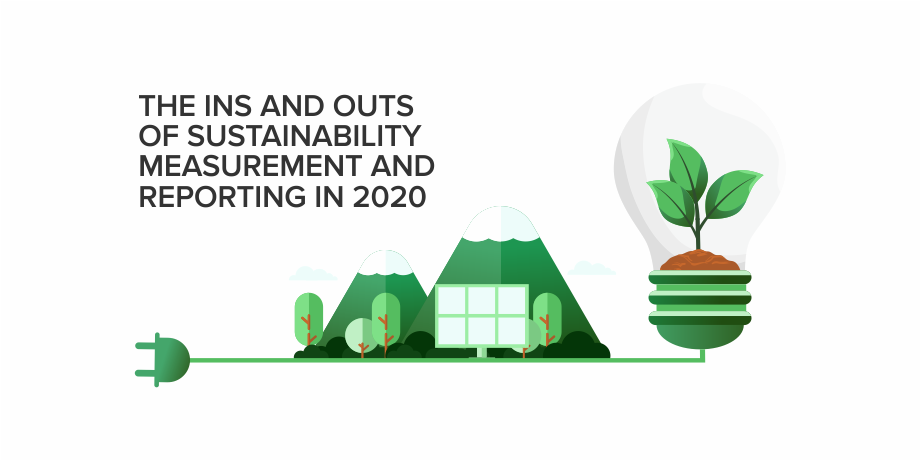Why do we need sustainability reporting and how to make one?
Can you imagine such a scenario? It’s mid-21st century, The whole planet is suffering from dust storms and the shortage of food as a result of crop blights. There is a major threat to humanity’s survival. It seems like the plot of the Interstellar movie (2014) could easily become the reality of our children. To change it, the actions need to be done today!
The solution to stabilize the initial crisis is to reduce the carbon footprint. Governments and big corporations understand and communicate environmental policies. Yet, our planet reached its peak point. In that case, each individual should commit to the sustainability principles for the sake of future generations. So, starting measuring personal effects on the planet using sustainability reporting systems is the first thing to do. Hence, it facilitates real action to establish social, environmental, and economic benefits for everyone.
“We - the current generation - have the responsibility to make the world better for future generations.” - Priscilla Chan.
At 2muchcoffee we are passionate about modern tech solutions to existing challenges. It is crucial to have a profound level of expertise in a particular market niche. Working with startups focusing on sustainable development made our team create an overview of the market. We created introductory guidance on sustainability measurement and the growing value of sustainability reporting systems.
What is Sustainability?
Still, for the majority of the population, the notion of sustainability is a blur one. “Sustainability is treating the planet as if we planned to stay”. This is how Heartly Green, a sustainability consultant, and activist has defined the concept. In other words, it is an awareness that human activity will impose certain costs on the global environment.
Recently it’s been clear that our planet is in crisis. Extreme poverty, scarcity of natural resources, and food shortages are results of global economic challenges and political instability. Moreover, according to the NASA analyses 2019 was the second warmest year on record. So, the record-breaking temperatures were the reason for devastating Amazon fires in Brazil, the massive bushfires across Australia, and the fact Antarctica just hit 65 degrees, which is the warmest temperature ever recorded.
What is Sustainability Reporting?
Sustainability reporting aims to share the sustainability habits and metrics of the customers and stakeholders. Without sharing what the company is doing, people will understand the impact on the environment. This is a report about the economic, environmental, and social impact caused by everyday activity.
A sustainability report introduces the organization’s values and governance model. It states the link between its strategy and dedication to a sustainable global economy. Among the main benefits of sustainability reporting include building customer confidence, increasing innovation, improving corporate reputation, and regulating risk management.
There are several ways how to make a sustainability report and include it into the corporate social responsibility programs. It is possible to use established sustainability reporting frameworks (like GRI or CDP) or include sustainability performance as part of the overall performance.
Origin of sustainability
The notion of sustainability first appeared in the Brundtland Report (known as Our Common Future), published in 1987. This document was developed for the United Nations to warn about the negative environmental consequences of globalization. The aim was to offer solutions to the problems arising from industrialization and population growth.
In the 21st century, the new academic discipline emerged - sustainability science. The main focus of which is to examine the interactions between human, environmental and engineered systems in order to comprehend and contribute to solutions for urgent challenges (such as, pollution, land and water degradation, climate change, etc.).
Moreover, sustainability is managed and studied over different contexts of environmental, social and economic organisation. The process includes specific ecosystems, economic sectors, regions, states, and individual consumption.
Three Pillars of Sustainability
Talking about today, sustainability tries to secure present needs without compromising future generations. The main condition to do so is to follow the 3 pillars of sustainability. There are environmental protection, social development, and economic growth.
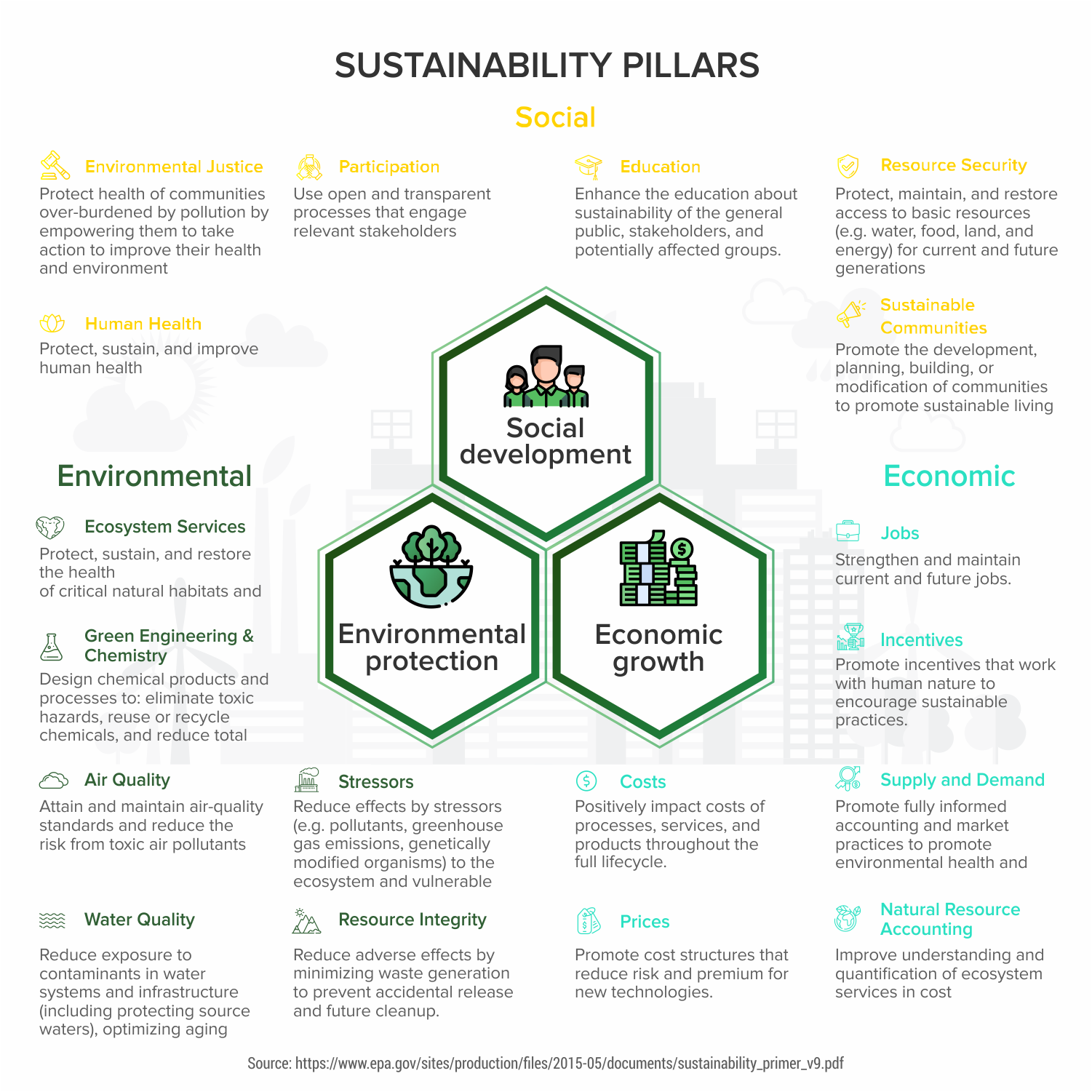
Environmental sustainability suggests that the environment is not an inexhaustible resource. So, it is necessary to protect nature and reduce human impact. Environmental resources management and eco-friendly chemical engineering only a few ways to do so.
Social sustainability promotes cohesion between communities and cultures. It aims to achieve satisfactory levels in quality of life, health, and education.
Economic sustainability focuses on equal economic growth. As a result, it generates wealth for all without harming the environment.
So, why does sustainability important? Challenges that humans face today can be tackled from a global perspective. So, climate change and global warming, water scarcity, food shortages need to promote sustainability. Sustainability is a process of maintaining harmonized conditions between population and nature. Resources, investments, technological development, and institutional change need to be in equilibrium.
Goals
The Sustainable Development Goals (SDGs)are the United Nations General Assembly's set of targets. These include the following goals:
To eradicate extreme poverty and hunger
To achieve universal primary education
To promote gender equality and empower women
To reduce child mortality
To improve maternal health
To combat HIV/AIDS, malaria, and other diseases
To establish a global partnership for development.
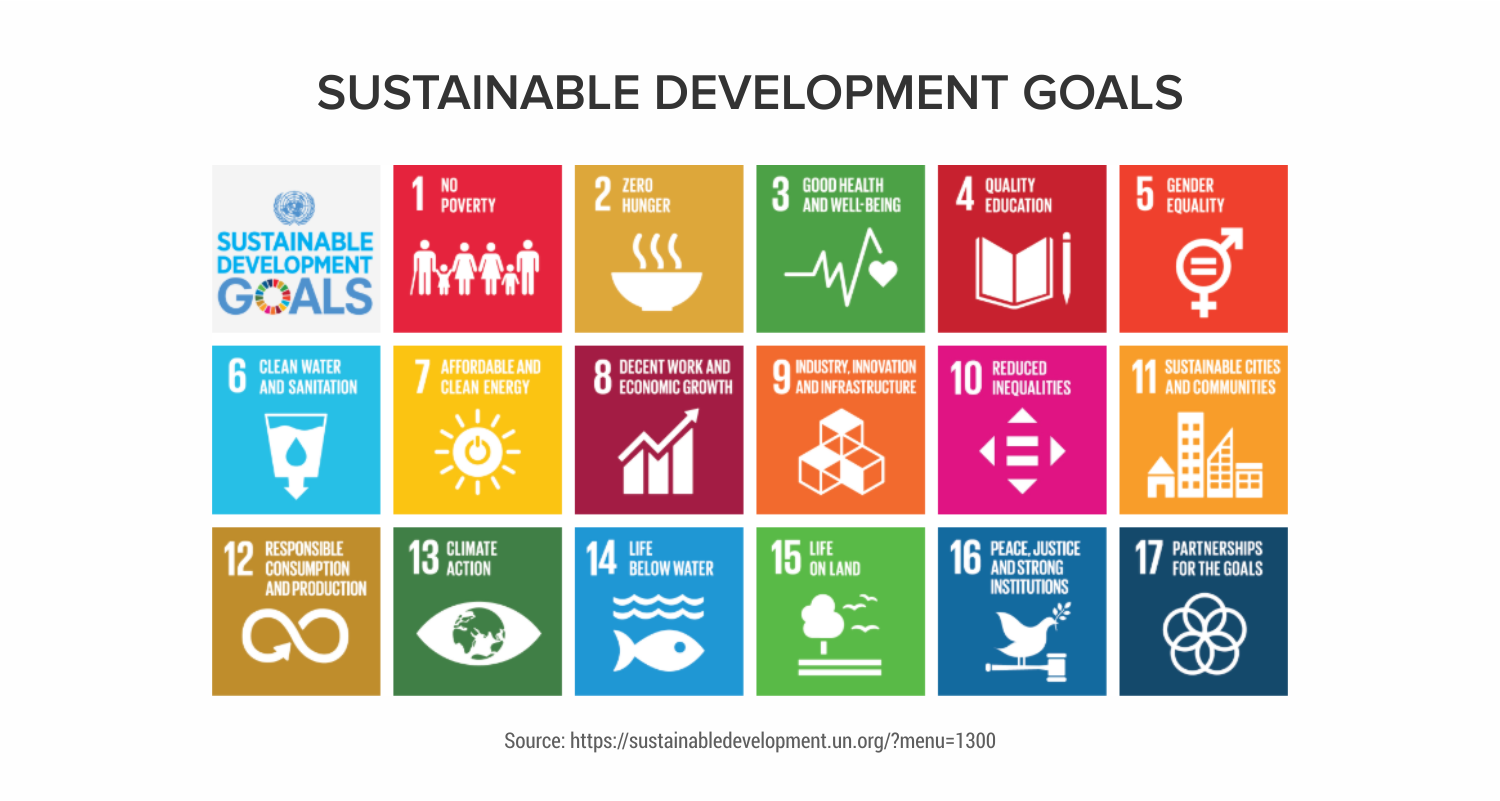
Sustainability in business has become a common trend nowadays. Businesses have to reevaluate their economic analysis and frame decisions for years ahead. The strategy focuses on different factors not only for the profit/loss on the next quarterly reports.
It is a common practice to establish sustainability goals first and then work towards them. For example, the goal could be to cut the emission by 10%, lower energy usage, or sourcing products from fair-trade organizations. So, when the company would achieve its sustainability goals, they will be able to call themselves “sustainable” or “green”.
Why Do We Need Sustainability Reporting?
Usually, the Earth has gone through warm and cold phases. The sun’s intensity, volcanic eruptions, and other natural changes contribute to climate change. But, the records state that today’s climatic change develops much faster than ever before. It can’t be explained by natural causes alone.
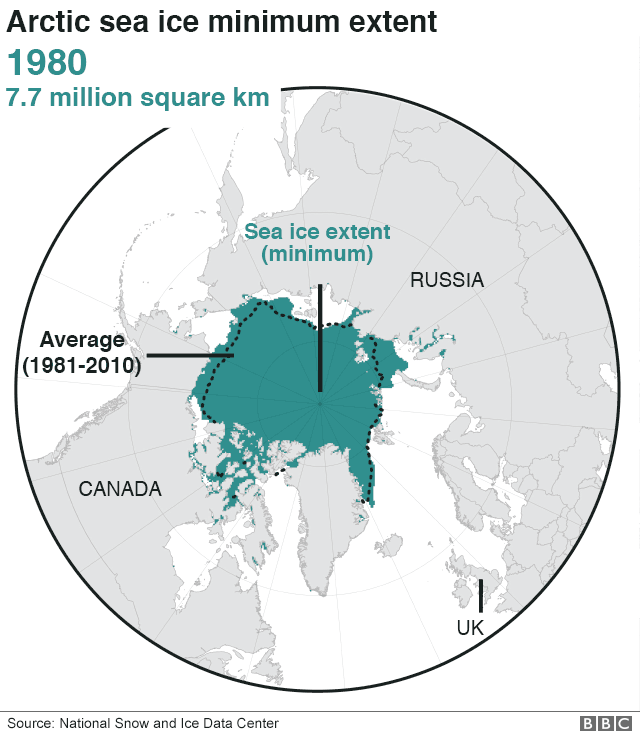
Devastating floods, storms, and fires are all the outcomes of the anthropogenic causes of climate change. The greenhouse emissions (GHG) generated by humans are the leading cause of the earth’s rapid change in the climate.
The cause of climate change is simple. The energy from the sun reflects off the earth (by clouds and ice mainly) and goes back into space. This is exactly how the planet gets cooler. When the earth absorbs the sun's energy or when the atmospheric gases prevent heat released by the earth from radiating into space (the greenhouse effect), the planet warms.
Greenhouse gases play an important role in keeping the planet warm enough to inhabit. But the amount of these gases in our atmosphere has skyrocketed in recent decades. According to the Intergovernmental Panel on Climate Change (IPCC), concentrations of carbon dioxide, methane, and nitrous oxides “have increased to levels unprecedented in at least the last 800,000 years”. Recently, the atmosphere’s share of carbon dioxide has risen by 40 percent since preindustrial times.
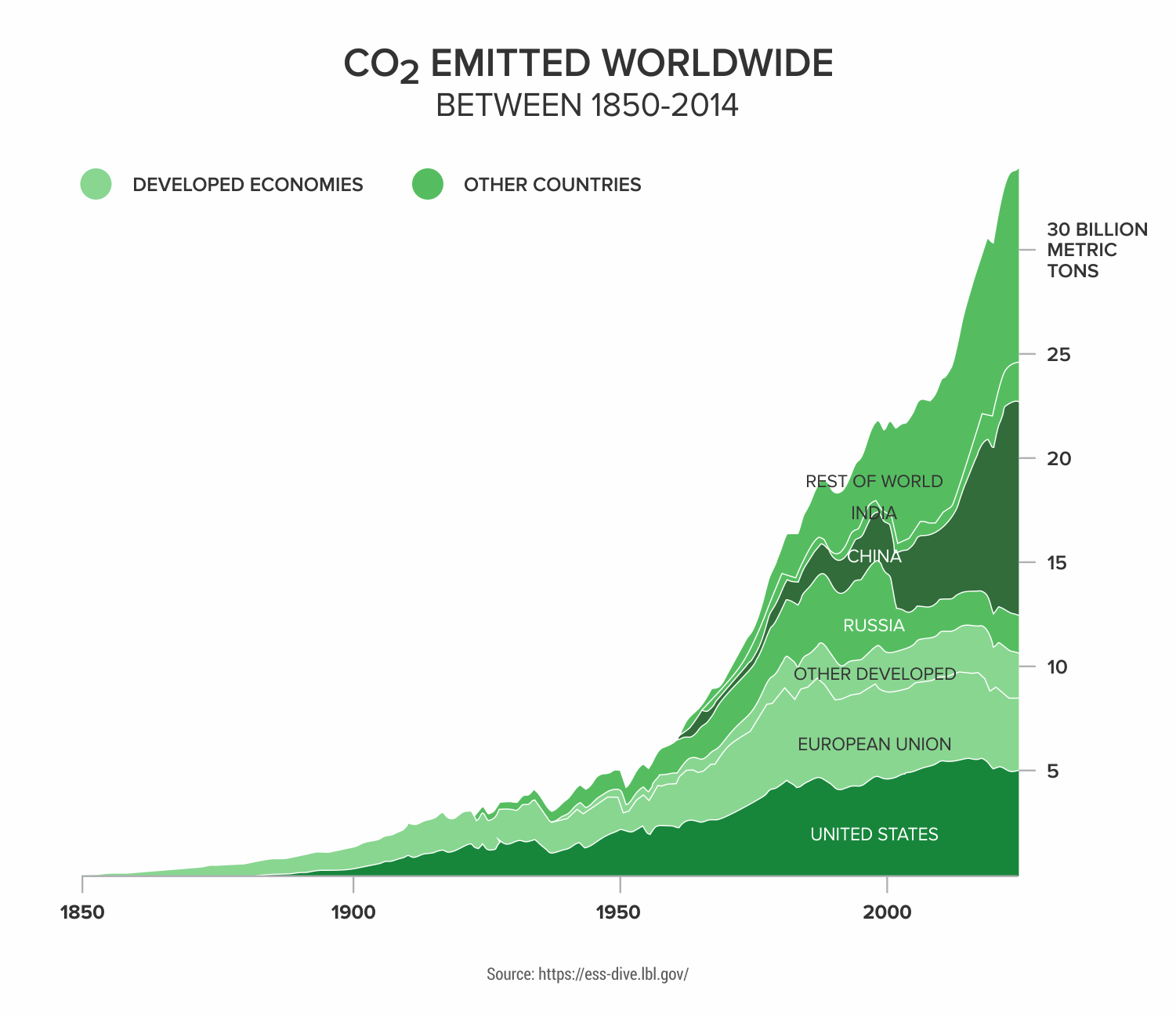
The primary source of human-generated emission is the burning of fossil fuels like coal, oil, and gas. These are necessary components for electricity, heat, and transportation. A second major source is deforestation, that releases sequestered carbon into the air. It’s estimated that clear-cutting, fires, and other forms of forest degradation contribute up to 20 percent of global carbon emissions. Other human activities that generate air pollution include fertilizer use (a primary source of nitrous oxide emissions), livestock production (cattle, buffalo, sheep, and goats are major methane emitters), and certain industrial processes that release fluorinated gases. Activities like agriculture and road construction can change the reflectivity of the earth’s surface. That could lead to local warming or cooling, too.
Though our planet’s forests and oceans absorb greenhouse gases from the atmosphere through photosynthesis and other processes, these natural carbon sinks can’t keep up with our rising emissions. The resulting buildup of greenhouse gases is causing alarmingly fast warming worldwide. It’s estimated that the earth’s average temperature rose by about 1 degree Fahrenheit during the 20th century. If that doesn’t sound like much, consider this: When the last ice age ended and the northeastern United States was covered by more than 3,000 feet of ice, average temperatures were just 5 to 9 degrees cooler than they are now.
Hence, the Earth's global surface temperatures in 2019 ranked second-warmest since 1880, according to independent analyses by NASA and the National Oceanic and Atmospheric Administration (NOAA). So, we won’t even discuss whether is global warming real or not, simply watch the following video to clear everything out.
Outcomes of climate change
Climate change transforms global ecosystems. As a result, it affects everything from the places we live to the water we drink to the air we breathe.
Extreme weather
As the atmosphere heats up, it collects and retains more water. As a result, the weather pattern changes, making wet areas wetter and dry areas drier. The high temperature makes it worse and increases the frequency of natural disasters. That is why storms, floods, heatwaves, and droughts have such a devastating effect now. These events jeopardize access to clean drinking water, polluting the air, damaging property.
Air pollution
Causes of air pollution and climate change link together. When the earth’s temperatures rise, the air gets drier with smog and soot levels going up. Also, there are allergenic air pollutants such as circulating mold and pollen. As a result of the damp conditions from extreme weather and more floods as well as due to longer pollen seasons.
Health risks
The World Health Organization forecasts climate change may cause 250,000 deaths per year between 2030 and 2050. The rise of temperature increases the fatalities and from heatstroke, and cardiovascular diseases. As air pollution worsens, so does respiratory health. As a result, over 300 million people are living with asthma worldwide. There’s more airborne pollen and mold to torment hay fever and allergy sufferers, too. Extreme weather as storms and flooding lead to water contamination and community displacement.
Rising seas
The Arctic is heating twice as fast as any other place on the planet. Nowadays, there are a few causes of rising sea levels. The first one is that water is added from melting ice sheets and glaciers. The second case is the thermal expansion when the seawater expands as it gets warm.
As the ice sheets melt into the seas, the oceans rise around two feet higher by 2100. As a result, threatening coastal ecosystems. Island nations face particular risks. The same with the world’s largest cities including New York, Miami, Mumbai, and Sydney.
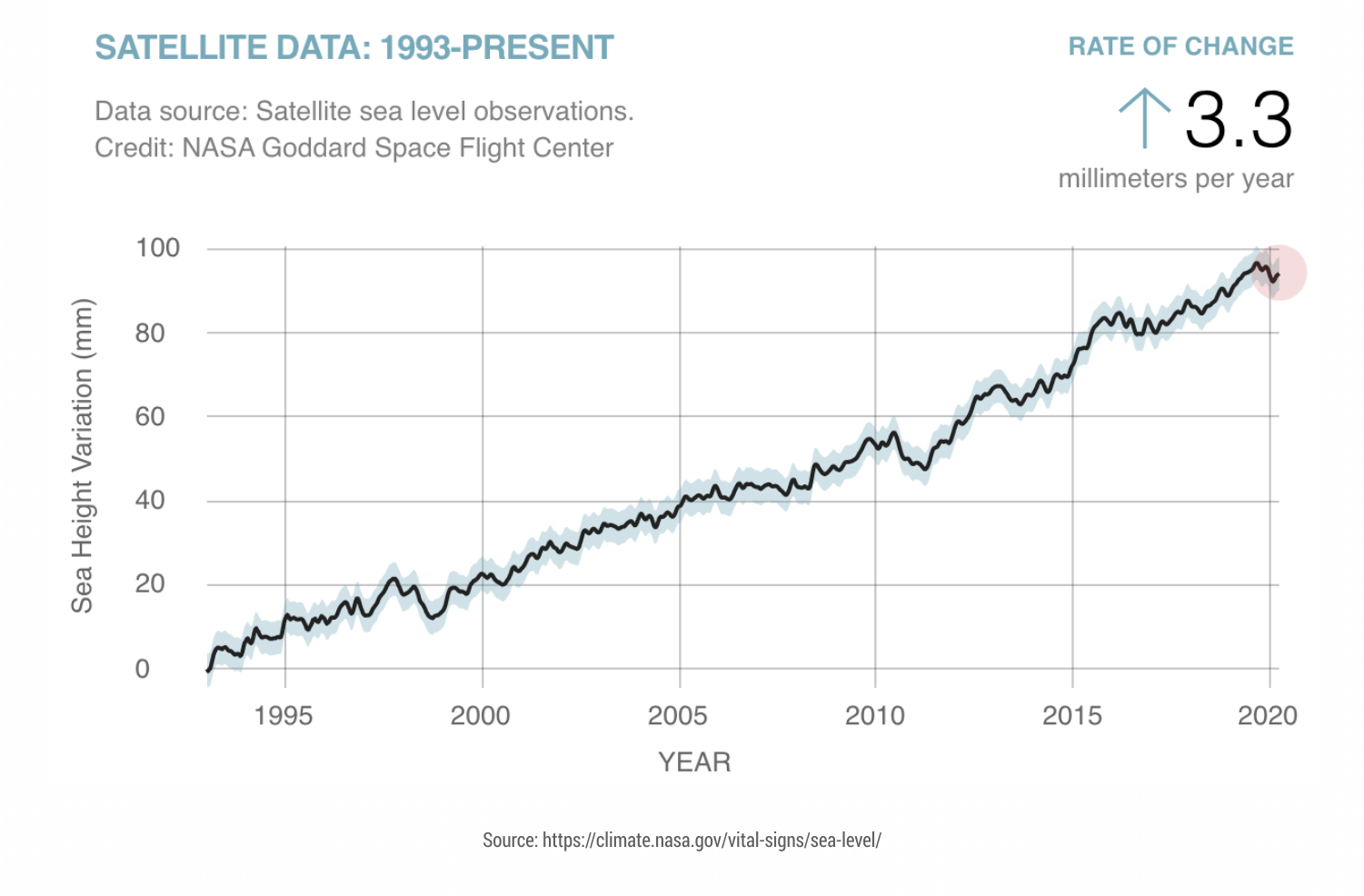
Warmers, more acid oceans
The oceans absorb between one-quarter and one-third of our fossil fuel emissions. Now oceans are 30 percent more acidic than they were in preindustrial times. This acidification poses a serious threat to underwater life. It can have a devastating impact on shellfisheries, as well as the fish, birds, and mammals that depend on shellfish for sustenance. Rising ocean temperatures are also altering the range and population of underwater species. It contributes to coral bleaching events capable of killing entire reefs. Ecosystems that support more than 25 percent of all marine life.
Imperiled ecosystems
Climate change is increasing pressure on wildlife to adapt fast to changing habitats. Many species are seeking out cooler climates and higher altitudes. It makes them alter seasonal behaviors and adjust traditional migration patterns. These shifts can transform entire ecosystems. According to a 2014 IPCC climate change report, many species now face “increased extinction risk due to climate change.” The study showed that mammals, fish, birds, reptiles, and other species are disappearing 114 times faster than they should be. This phenomenon was linked to climate change, pollution, and deforestation—all interconnected threats.
What is global governance for sustainable development?
The 21st century is the time of social, political, economic, and ecological transformation. The emerging new order focuses on globalization and global governance. Yet the relationship between these two concepts does not clear. One of the ways to link the approaches suggests that the process of globalization creates a demand for global governance.
Globalization means expanding worldwide interconnectedness in all aspects of life. This interconnectedness is a key reason for government failures. The sovereign borders are getting porous and the frontier between national and transnational forces is blurring. External effects have a much greater impact on the responsiveness and problem-solving capacity of nation-states. In this view, global governance has emerged as the social, political, and economic reaction to the process of globalization. In short, global governance is a distinct form of sociopolitical steering in the era of globalization.
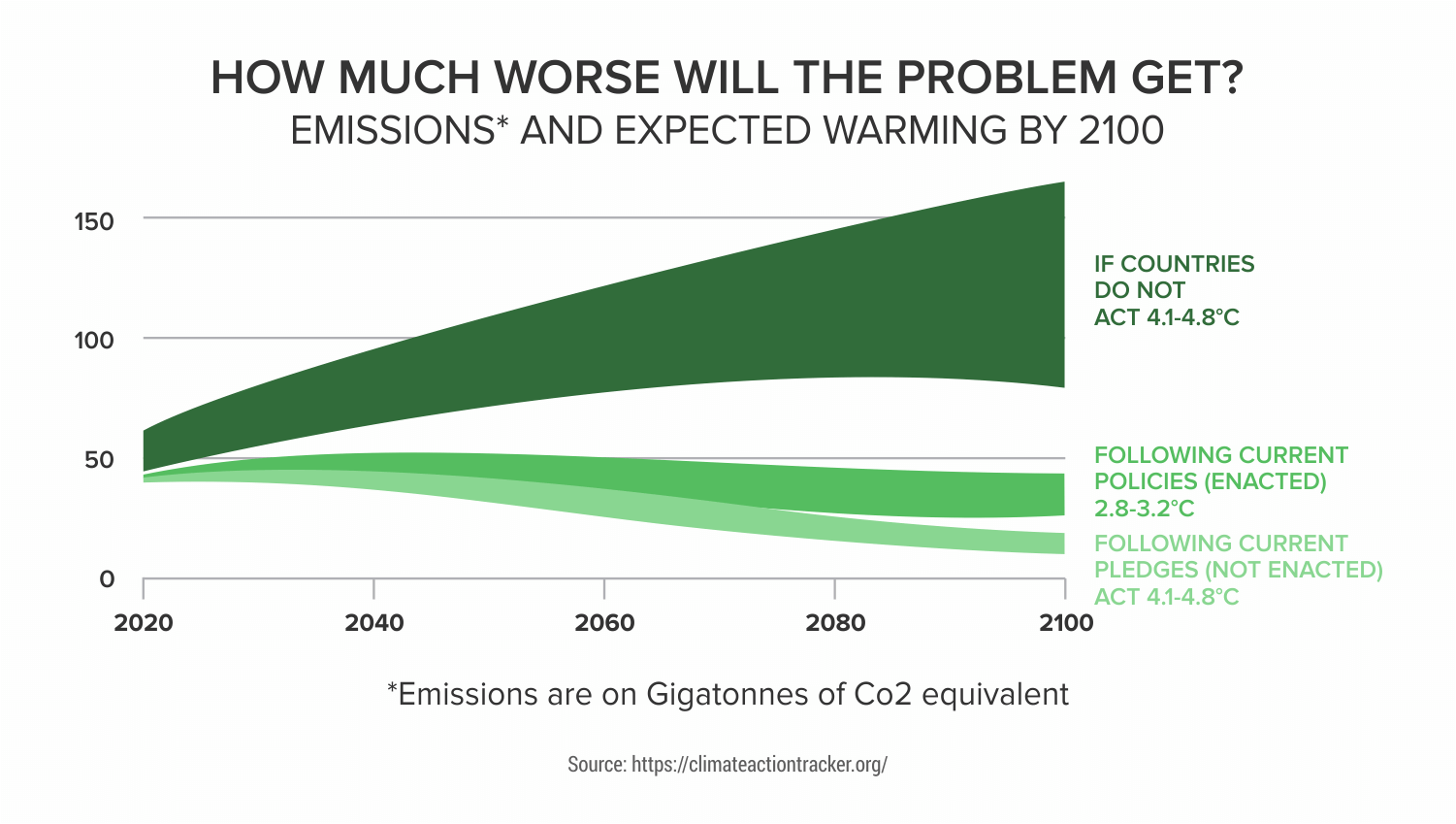
Global Governance and Sustainable Development
Global governance that supports sustainable development is one of the challenges facing political decision-makers, in Europe and beyond. The vital question is to design effective, stable, and legitimate governance systems at national, and international levels to ensure sustainable development.
Still, global governance is failing when we need decisive actions towards sustainability issues. The paradox of our times is that, as global problems become more complex and threatening, our global institutions lose their force as organizing frameworks for inter-state cooperation. David Held, Master of University College and Professor of Politics and International Relations at Durham University, explains what are the reasons for such paradox during the TEDx event.
We suggest watching the video “Why effective altruists should care about global governance” (2017) by Kristian Rönn. He is a project manager and researcher at a global challenges foundation and co-founder of Normative. Normative is a software tool for measuring corporate sustainability. The presenter stressed that there are precise risks that transcend national borders. Our system of global governance struggles to deliver the solution. So we need to have new global solutions instead.
The early years of the new millennium was described as an era of profound transformation. The end of the Cold War altered the international system from a bi-polar world to one of the many spheres of power. Technological developments have changed the ways we process and distribute information. Humankind is no longer limited to modifying local and regional environments. It has entered into a phase of change of a planetary dimension. It is so profound that some scholars are using a new label to describe our time: the Anthropocene.
Johan Rockström discusses how we can build a robust future without wrecking the planet. The sustainability expert elaborates on a new method - the Earth3 model. It combines the UN SDGs with the nine planetary boundaries, beyond which the earth's vital systems could become unstable. The new policies could help to achieve inclusive and prosperous development while keeping the earth stable and resilient.
In this context, social scientists are concerned about the perennial question of governance. How humans regulate their affairs to achieve common goals and react to an increasing environmental threat. In particular, attention has focused on steering politics in the nation-state and the international community.
Global governance for sustainable development features a plurality of actors. In particular the increasing involvement of non-state actors. Hence, business used to be depicted as a primary source of the world’s environmental problems. Today it is a vital contributor to solving those problems. But, any serious attempt to solve the challenge of climate change will need the large contributions of business and civil society. Many companies start corporate sustainability programs today. But the majority of them do not know proper metrics and how to track the success of the program.
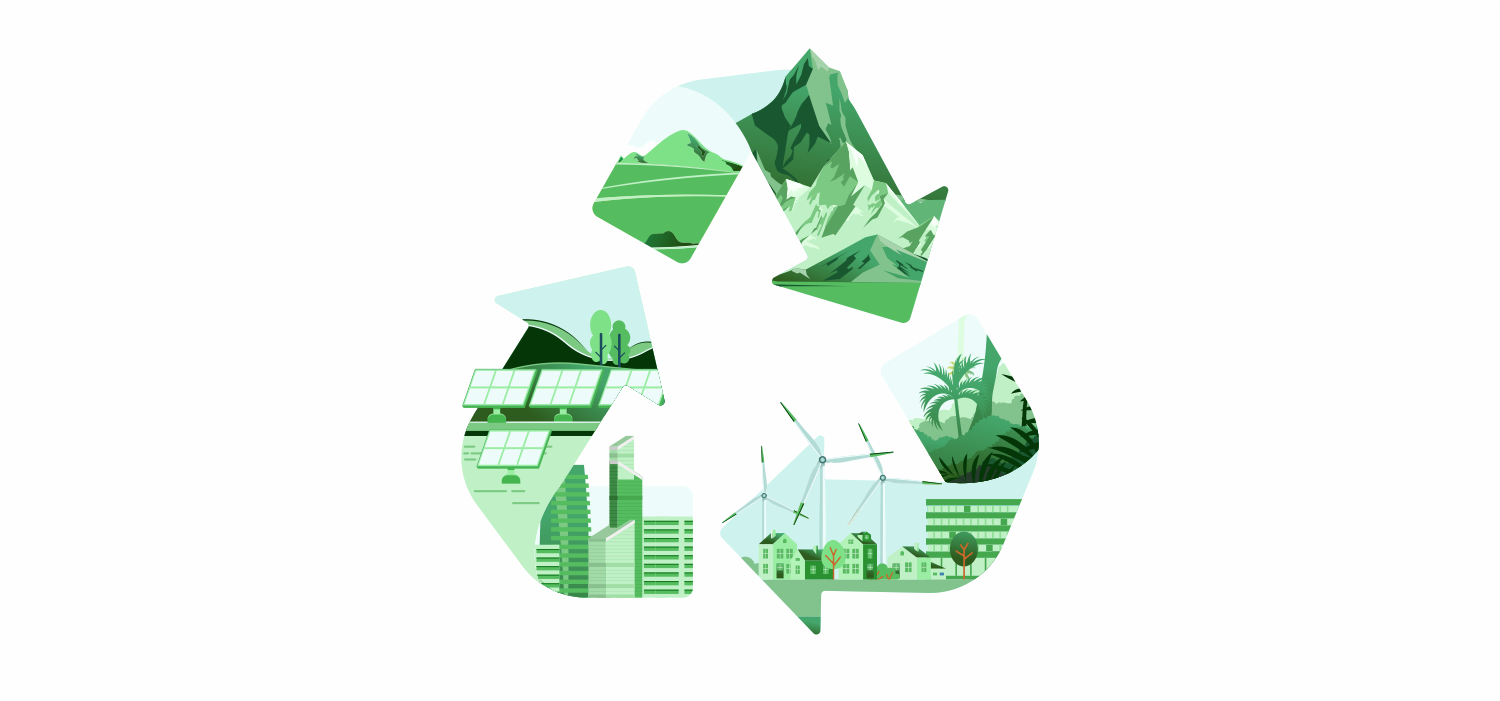
How to Make a Sustainability Report?
Corporate sustainability measurement and reporting are going to be discussed in this section. These are necessary tools for the company strategy to achieve sustainable success. In doing so, the relationship between company performance and these factors is important.
Who should report?
Since all companies interact with the environment, it is important to measure sustainability performance. Each organization should have the corporate sustainability policy. Such policy should include data on the emission, recycling, trash, healthcare policies, and employees driving, etc..
Sustainability reports release companies and organizations of all types, sizes, and sectors. Thousands of companies, public authorities, and NGOs across all sectors have published reports that reference the GRI Standards.
Major providers of sustainability reporting guidance include:
GRI (GRI's Sustainability Reporting Standards);
The Organisation for Economic Co-operation and Development (OECD Guidelines for Multinational Enterprises);
The United Nations Global Compact (the Communication on Progress);
The International Organization for Standardization (ISO 26000, International Standard for social responsibility).
Sustainable Reporting Process
The process of sustainability reporting is like all performance-based business management processes. It usually involves such steps as:
Setting the sustainability goals of the company. The most crucial step since it should guide the rest of the process. The company should understand why it wants to use sustainability reporting standards. A company will need to test whether its focus is on continuous improvement or if it is measuring its performance relative to a broader target, such as a reduction in greenhouse gas (GHG) emissions.
Measurement stage. The next move is to develop the key performance indicators (KPI) that will be used to measure progress. The financial, human and information technology resources need to pay attention to choose the right KPI. At this stage, data needs to be collected, validated for accuracy and stored.
Evaluation of the performance. The main aim is to convert raw data into useful information. So thoughtful organizational decisions will be undertaken in the future. The main components include data compilation, data analysis, and communication.
Managing the performance. The company should be prepared to react according to the sustainable report outline. This stage is the prerogative of management. Management should review sustainable performance information and focus on the circles of sustainability. The management proceeds back into the first step of defining initial sustainability goals if needed.
The Sustainable Business Case Book includes more details on the sustainability reporting process.
Challenges With Sustainability Reporting
Sustainability is now seen as the business paradigm for the 21st century. Decisions on corporate sustainability pose a significant dilemma for managers. It is all about to match social and environmental concerns against economic results.
A sustainability performance management system (SPMS) helps corporations to manage their activities. SPMS provides indicators with the information needed to plan activities undertaken by corporations.
Like any other performance-based business process the accuracy is the key to produce data. Sustainability investing continues to grow in popularity. But the lack of standardization in sustainability reporting poses a challenge for investors. They wish to maximize the social responsibility and cut the social damage of their investments. The authors, who studied sustainability ratings issued by the mass media, now turn their attention to rankings used by the investing community itself. The findings say that they may be a more reliable barometer of a company’s commitment to environmental, social, and governance impact. Still, further research into the long-term link between sustainable practices and value creation is needed.
Corporations are moving in the right direction with sustainability measurement and reporting systems. But, more work needs to be done to improve the quality of sustainability reporting.
Reasons for doing sustainability reports
There are many companies now producing an annual sustainability report and there is a wide array of ratings and standards around. There are a variety of reasons that companies choose to produce these reports, but at their core, they are intended to have a positive impact on society, the economy and a sustainable future.
Often they also intended to improve internal processes, engage stakeholders, persuade investors and ensure trust due to being transparent about the risks and opportunities they face. Consequently, it leads to better decision-making practice, which helps build and maintain trust in businesses and governments.
Many companies are actively integrating sustainability principles into their businesses, according to a recent McKinsey survey, and they are doing so by pursuing goals that go far beyond earlier concern for reputation management—for example, saving energy, developing green products, and retaining and motivating employees, all of which help companies capture value through growth and return on capital.
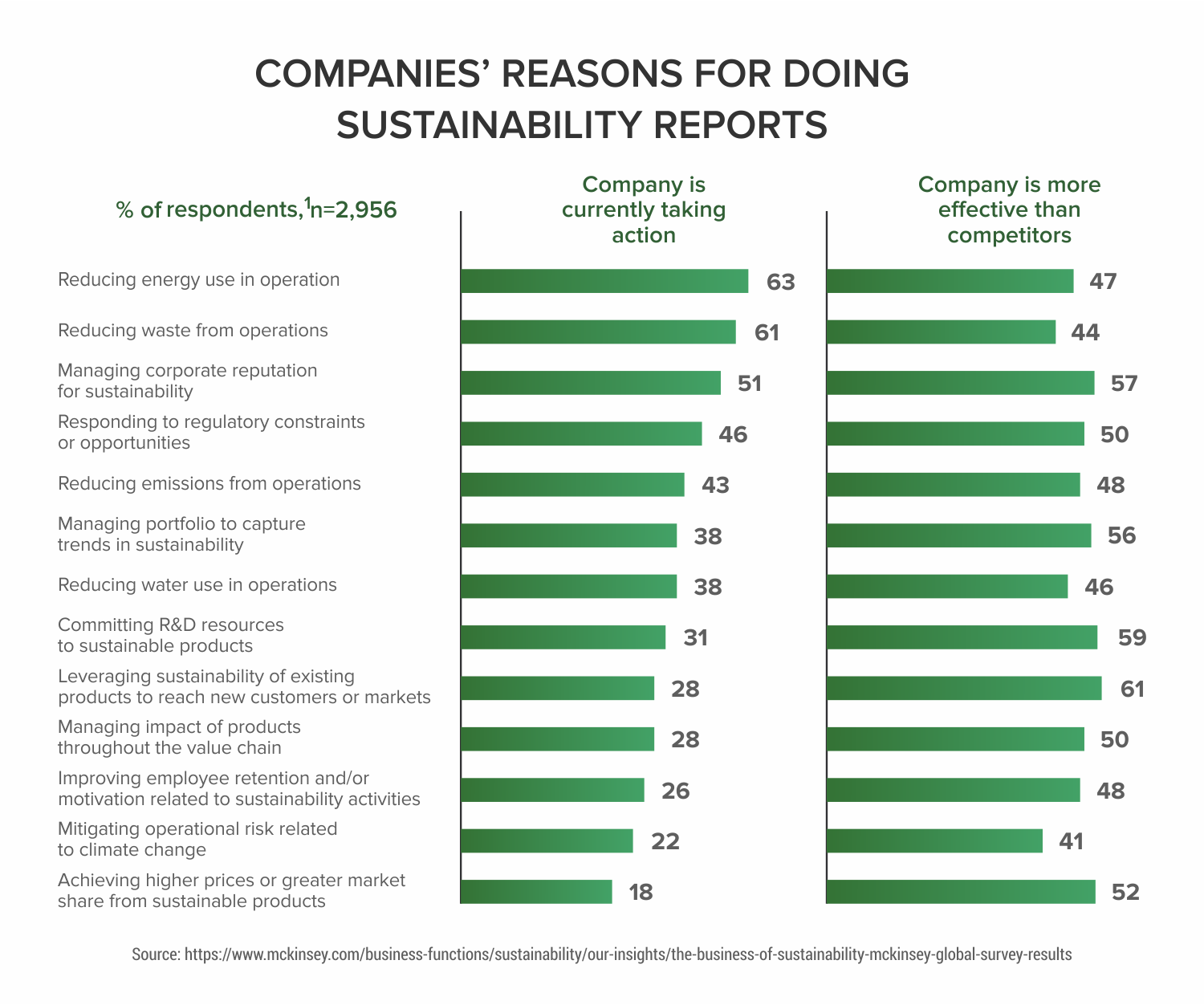
The corporate annual sustainability report has become a common way for businesses to report out annual progress on sustainability initiatives. Needless to say that sustainability reporting has a lot of benefits.
Benefits inside the business/corporation:
Increased understanding of risks and opportunities;
Emphasizing the link between financial and non-financial performance;
Influencing long term management strategy and policy, and business plans;
Streamlining processes, reducing costs and improving efficiency;
Benchmarking and assessing sustainability performance with respect to laws, norms, codes, performance standards, and voluntary initiatives;
Avoiding being implicated in publicized environmental, social and governance failures;
Comparing performance internally, and between organizations and sectors.
External benefits consist of:
Mitigating negative environmental, social and governance impacts;
Improving reputation and brand loyalty;
Enabling external stakeholders to understand the organization’s true value, and tangible and intangible assets;
Demonstrating how the organization influences, and is influenced by, expectations about sustainable development.
Conclusion
There are a lot of sustainability articles. A lot of them elaborate on the scientific relevance of a sustainable environment. Yet, humanity reached the pick-point where severe climate change is a vivid consequence of human activity on the planet.
So, the greenhouse emission is the leading cause of the rapid change in the climate. That is why reducing the carbon footprint is the predominant challenge that needs to be solved.
In order to stabilize the crisis, businesses (both startups and big corporations) have to generate sustainability reports - in order to validate and ensure that the whole process from the raw material to the finished product or services was done correctly. Currently, the sustainability report identifies the impact enterprises (big or small) had on our planet and global sustainability.
In fact, such reports are a crucial element in the mechanism of detecting turbulent areas and improving sustainability worldwide. However, the idea is far from reality. There are a lot of challenges while producing sustainability reporting, therefore, there are some platforms that strive to change it and automate the whole procedure. For example, Normative - a platform that is able to change the old approach towards the reporting system and develop strong sustainability initiatives worldwide.
Share this article with others, for there’s a good chance that someone will benefit from the information above. And if have any questions, don't hesitate to contact our team!
